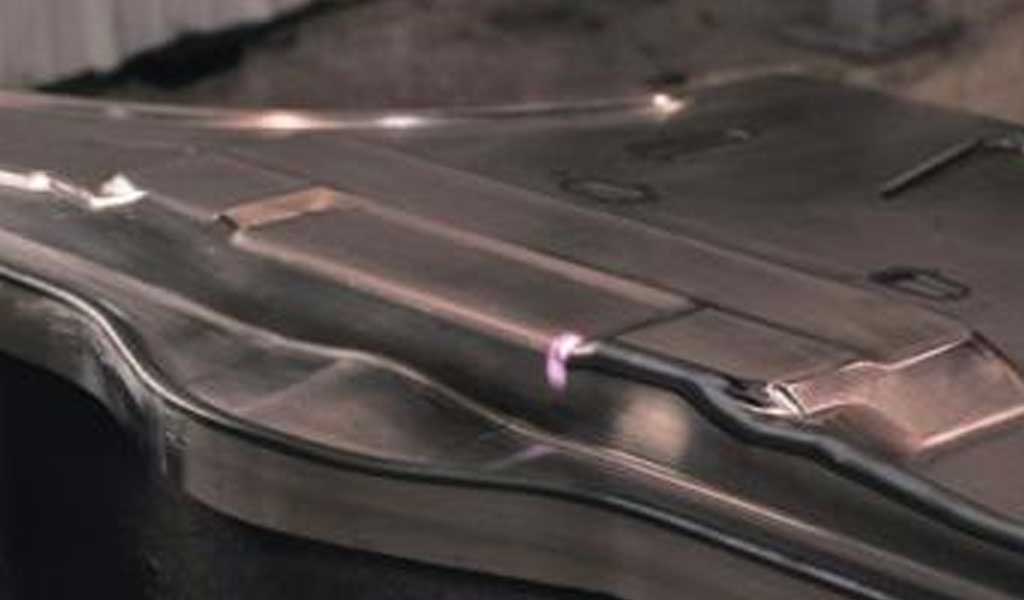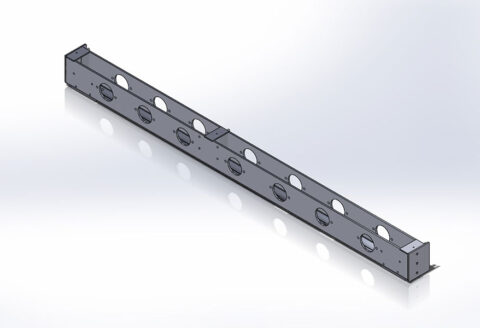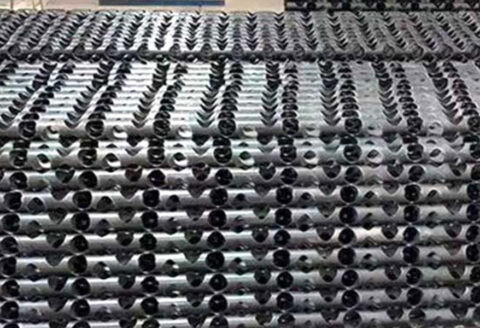For the exact same auto mold, auto mold OEM manufacturers across Europe are delivering faster, higher quality and lower cost than US OEM manufacturers. The reason for this is laser heat treatment (see Figure 1), a process that is close to mainstream in Europe but hardly practiced in the United States.
What Is Laser Heat Treatment?
In the laser heat treatment process, a laser beam with a typical spot size between 0.5 x 0.5 inches and 2 x 2 inches irradiates the surface of a metal part as a means of transferring heat to it. The laser energy is delivered in such a way as to raise the temperature of the metal surface and heat affected zone (HAZ) above its metallurgical transition temperature. When the laser heat source is removed, the heat of the metal is removed by conduction to provide rapid quenching of the heated area, resulting in the desired hardness.

The details of the laser beam operation can be fine-tuned for precise control over all aspects of the hardening process. Depending on the geometry, laser heat treatment also allows for the treatment of otherwise hard-to-reach areas with line-of-sight. Laser heat treatment is also sometimes referred to as laser hardening.
Benefits Of Laser Heat Treatment
Compared to traditional heat treatment techniques such as induction, furnace and flame heat treatment, the benefits of laser heat treatment are:
1. Consistent hardness depth
With precise control of the energy delivered to the metal itself, including millisecond feedback control, the nature of laser energy means that laser heat treatment can produce HAZs to exacting specifications, resulting in consistent hardness depths within very tight tolerances.
2. Most auto molds do not need hard milling
In addition to the precise control mentioned earlier, the inherent nature of the laser energy itself means that for any given HAZ size, laser heat treatment automatically provides the smallest possible total energy to the processed mold. In most automotive molds, the built-in capabilities of the process automatically achieve zero distortion. Unlike traditional heat treatment methods, which require grinding of additional material after heat treatment, laser heat treatment is performed after the mold has been cut to its final shape. This saves costs by avoiding additional machining operations when the material is hard.
3. Higher hardness
Due to the rapid self-hardening of the heat treated area in laser heat treatment, the typical hardness achieved by this process tends to be several points higher than flame or induction processes under the correct process conditions.
4. Precise application of beam energy to the working point
The flame or coil need not be in close proximity to the work area. Laser heat treatment has a greater ability to apply heat only to the intended area, with minimal to zero heating of adjacent areas.
Laser Heat Treatable Materials
Any steel with a carbon content of 0.2% or more can be heat treated (see Figure 2). Typically, the hardness of laser heat treated molds is comparable to or better than that obtained using conventional techniques. Some common laser processable materials for automotive applications include:
- l D6510 Ductile Iron
- l S7140 alloy steel
- l G2500 gray cast iron
- l G25HP gray cast iron
- l G3500 gray cast iron
- l D4512 Ductile Iron
- l S0030 non-alloy steel
- l S0050A alloy steel
- l A2 tool steel
- l D2 tool steel
- l S7 tool steel
- l M2 tool steel
- l 4140 alloy steel
- l 4340 alloy steel


